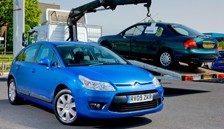Scrappage has already provided a boost to several manufacturers’ normal business.
A- and B-segment cars are accounting for the bulk of the scrappage sales, so brands with small, low-cost models are benefiting most.
Ford said it had taken more than 3,000 orders from customers new to the new car market, after the scrappage scheme brought its Ka and Fiesta models within a £6,000 and £8,000 budget respectively.
In the first week Kia took more than 4,000 orders, and Citroën said its May sales were 30% up, largely due to sales of its C1 city car.
One Vauxhall dealer told AM that scrappage was creating a problem as well as an opportunity. “We’re getting people coming in who imagine they could buy a new Corsa for £5,000 or £6,000, when even the cheapest Corsa Life starts at £10,000 and our cheapest Agila lists at £9,425. We don’t have anything that can compete with Kia or Hyundai’s small cars.”
The dealer also pointed out that his dealer management system (DMS) was not geared up to process the scrappage discount after VAT had been added to the deal, as required by the Government’s contract. As a result, he said, he faced hand-writing invoices.
If the scheme does achieve 300,000 sales, the £300 million invested by the Government will see it get back a £193 million net benefit from VAT returns, according to calculations by the SMMT.














Login to comment
Comments
No comments have been made yet.